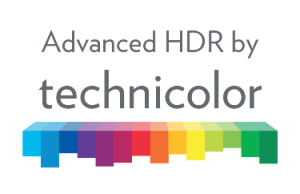Silver Spring, Maryland Dec 16, 2021 (Issuewire.com) - 2022 is shaping up to be a very big year for NextGen TV as the adoption of Advanced Television Systems Committee (ATSC) version 3.0 and rapidly maturing video technologies like high dynamic range (HDR) gather momentum. The Consumer Technology Association (CTA) recently increased their estimate of televisions sold with ATSC 3.0 capability in 2021 from 800,000 to more than 2 million units. That is a huge increase. It indicates that there is now a ready market for consumers to receive the advanced services included in the standard.
The ATSC 3.0 Standard defines the official specifications and criteria necessary for effective implementation and interoperability of Advanced Terrestrial Broadcast Systems. Since its announcement at the 2018 CES, it has taken the broadcast and consumer electronics sectors by storm despite a global pandemic. It continues to change the way the world experiences entertainment and broadcast.
“ATSC 3.0 can deliver more pixels at higher quality for ultra high definition (UHD), 4K, and HDR screens. This is a significant upgrade for customers with large screens,” says Alan Stein, vice president of technology at InterDigital, in a podcast interview for journalists.
In addition, ATSC 3.0 offers personalization, interactivity, and broadcaster applications, while also supporting mobile delivery. The latter is a hot topic among ATSC members working to address the possibility of cell phones receiving ATSC 3.0 signals. It is an ATSC application being actively explored in countries like India—where infrastructure limitations have triggered interest in creative ways of delivering high-quality video to consumers in a scalable, cost-effective manner. It also illustrates the international appeal of the standard. The most significant developments, however, are currently taking place in the United States.
ATSC 3.0 and HDR Have Captured the Market’s Attention
“About 40% of the US public today is served by a minimum of one ATSC 3.0 signal and related services. By the end of 2021, we expect that number to top 50%,” says Mark Aitken, senior vice president of technology for Sinclair Broadcast Group and president of ONE media.
“HDR is one of the features that most visibly improves the consumption of over-the-air (OTA) and over-the-top (OTT) content. It greatly enhances the viewing experience, especially for things like live sports,” says Stein.
Sony recently revealed that all their television products for the second half of 2021 would be ATSC 3.0 enabled, supporting next-generation features, including HDR, UVoice, and a variety of other capabilities that enhance the viewing experience for the American public.
“Companies like Sony—and streaming services like Netflix and Amazon—are utilizing HDR to enhance viewer experience for as much of the market as possible. The broadcast industry is responding rapidly. For those that embrace HDR early, it is a clear way to establish differentiation, which is critical with fierce competition,” explains Aitken.
Broadcast, he added, remains one of the most ubiquitously available technologies in the market, which is why it has been so essential to develop standards that can evolve to deliver experiences that consumers across the nation expect and increase demand. It ensures that the needs of all segments of the market are met—even as we move forward as quickly as possible to keep up with improvements in technology.
Blurring the Lines Between OTT and OTA
ATSC 3.0 is providing an opportunity for over-the-air broadcasters to play in the digital space and become online content providers. HDR is thriving in the OTT arena, and broadcasters are quickly gaining ground with ATSC 3.0 and Advanced HDR by Technicolor.
“One area in which broadcasters consistently enjoy a competitive advantage over OTT providers is in the delivery of live sports programming. It is also a category of content that takes full advantage of HDR technology. HDR was on full display this year during the exceptional U.S. Open tennis championship broadcast over Sinclair Broadcast Group’s Tennis Channel,” says AItken.
“The Tennis Channel, which is brought to consumers through the Bally Sports Regional Networks in 23 markets, will be using Advanced HDR by Technicolor for both our streaming and over-the-air broadcast services in 2022,” he adds.
The U.S. Open showcased how ATSC 3.0 and Advanced HDR, by Technicolor are dramatically narrowing the competitive gap between over-the-air and streaming service providers. Moreover, the integration of emerging technologies enabled by the new internet protocol (IP) friendly standard provides an important bridge for broadcasters to move into the rapidly evolving streaming market.
“It is an important milestone. We're now seeing broadcast apps that embrace and extend the best ideas from OTT services while still having the scale and channel change speed that consumers like about traditional television. This allows broadcasters to play to their strengths, highlighting the absence of latency and unreliability that you sometimes get with some streaming applications and devices,” says Stein.
Advanced HDR by Technicolor’s Impact on Broadcast
According to Stein, Advanced HDR by Technicolor is the only industry solution that enables a standard dynamic range (SDR)—a non-HDR signal—and an HDR signal to be simultaneously delivered in one bitstream. It is an economically efficient and technically effective solution because it sidesteps the need for broadcasters to use two channels to bring both HDR and SDR services to consumers. This backward compatibility is critical because of the widespread presence of legacy SDR televisions and set-top boxes that remain in the market today.
From a production perspective, Advanced HDR by Technicolor also supports the ability for broadcasters to use HDR cameras—which bring higher quality into live production—and integrate those inputs with SDR cameras into a single distribution workflow in a way that automatically adjusts to the capabilities of the receiving device, regardless of whether they are HDR or SDR capable.
“If you've got a television set that was manufactured in the last three years, and it's 4K HDR-capable, you can connect your gateway or set-top box, and you've got glorious eye-popping HDR television. It also maximizes the experience of SDR-only devices. Either way, we want people to see the difference,” concludes Aitken.
To read the full Q&A or listen to the podcast interview visit:
To learn more about Advanced HDR by Technicolor visit:
https://bit.ly/AdvancedHDRbyTechnicolor
Media Contact
BizTechReports *****@mindsharecapture.com http://www.biztechreports.com











